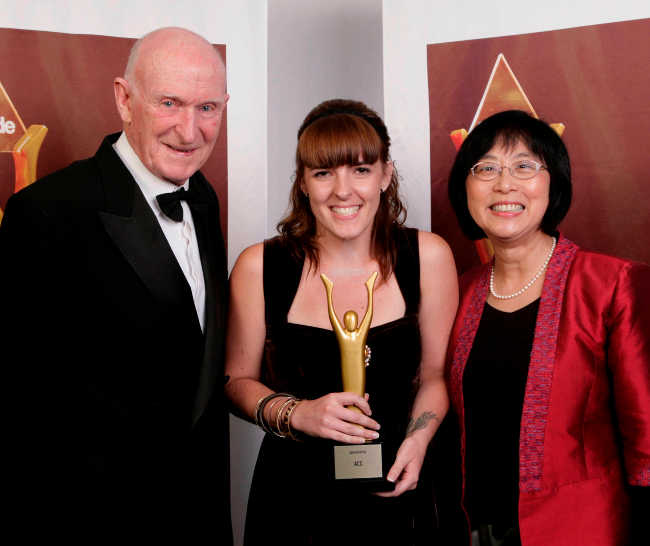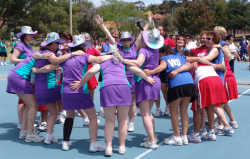Dorothy – 26/11/99
In the nineteenth century women worked together and in 1893 New Zealand
women gained the right to vote. New Zealand was the first country in the
world to grant suffrage to all women over twenty one. What has happened to
New Zealand women in the political sphere since?
Some milestones since 1893 In 1893 Elizabeth Yates was elected as mayor of Onehunga – the first woman
mayor in the British Empire. She received congratulations from Premier
Richard Seddon and Queen Victoria. She had assisted her husband with his
mayoral duties and when ill health caused him to retire she was elected as
mayor of the borough. She was an able administrator but is recorded as
being rather tactless and dictatorial, and was defeated in the election in
1894. However she returned later for one term as Borough Councillor.
She was the first woman to record her vote in New Zealand in 1893.
In 1896 the National Council of Women was formed and in 1897 they passed a
resolution affirming their belief in equal pay for equal work. In 1905 they resolved to ask the Prime Minister why he had not supported
Equal Pay for Government servants.
In 1913 Ellen Melville was elected to the Auckland City Council so beoming
the first woman to be elected to a city council. She was a solicitor and
had been the second woman to be admitted to the bar in New Zealand. (In
1896 the Female Law Practitioners Act had been passed and in 1897 Ethel
Benjamin was the first New Zealand woman to be admitted to the bar.) Women became angry at what they saw as sex prejudice when she was twice
passed over for the position of Deputy Mayor. When she died in 1946 she
was the longest serving member of the Auckland City Council.
In 1919 women gained eligibility to be elected to Parliament with the passing of the Women’s Parliamentary Rights Act. Ellen Melville stood for
the Reform Party in Grey Lynn and although this was traditionally a Labour
electorate she gained 30.9% of the vote while the Labour candidate won the
seat with 36.5%. Despite this good performance she was not accepted as a
candidate for the next election by the Reform Party who chose instead a man
who had belonged to the Liberal Party. She stood for Parliament seven times, sometimes as an independent, but though she polled strongly every
time she was not successful in being elected.
In 1933 Elizabeth McCombs became the first New Zealand woman Member of Parliament, being elected in a by-election as Labour member for Lyttelton
on the death of her husband, James McCombs. He had been elected with a
slim majority of 32 votes. Her majority was 2669 She was no newcomer to
politics having stood for Parliament unsuccessfully in other electorates in
1928 and 1931. She died on 7 June 1935.
In 1938 Catherine Stewart was the first woman elected in a general election. She became the Labour member for Wellington West.
In 1942 Mary Grigg became the National Party’s first female Member of Parliament. She was elected in a by-election in the Mid Canterbury electorate after her husband who had represented the electorate was killed
in World War 2.
In 1942 Mabel Howard became the first woman to be appointed national secretary of an all-male trade union organisation – the New Zealand Federated Labourers’ Union.
In 1947 Mabel Howard became the first New Zealand woman Cabinet Minister.
In 1943 she had been elected to Parliament in a by-election as Labour member for Christchurch East and from 1946-1969 was member for Sydenham.
In 1949 Iriaka Ratana became the first woman to be elected to a Maori seat
– Western Maori. She won the seat in a by-election on the death of her
husband Matiu Ratana, and remained in Parliament for twenty years.
In 1970 Whetu Tirikatene-Sullivan was the first woman to have a baby while
serving as a Member of Parliament.
In 1972 Whetu Tirikatene-Sullivan became the first Maori woman to serve as
a Cabinet minister.
In 1975 Marilyn Waring was elected to Parliament and at age 23 she was the
youngest woman to enter Parliament. She served as a Member of Parliament
for nine years.
In 1982 Sue Wood was the first New Zealand woman to be president of a political party when she was elected as president of the New Zealand National Party.
In 1984 twelve women became Members of Parliament, and two were Cabinet
Ministers.,
In 1984 Fran Wilde was the first woman to be appointed as Junior Whip.
In 1987 fourteen women were elected to Parliament, five of whom would become Cabinet ministers.
In 1989 Helen Clark became the first New Zealand woman to serve as Deputy
Prime Minister.
1990 an outstanding year for women’s appointment to new positions Dame Catherine Tizard became New Zealand’s first woman Governor General –
the fourth female Governor-General in the Commonwealth. She had already
served as Auckland’s first woman mayor from 1983. She was created a Dame
Commander of the British Empire in 1984 and granted the Freedom of the City
of London in 1990.
Sixteen women were elected as Members of Parliament. One of them, Judith
Tizard, is the daughter of Dame Catherine.
Helen Clark became the first New Zealand woman appointed as a Privy Councillor.
Ruth Richardson became the first woman in the British Commonwealth to become Minister of Finance.
(In this same year the Rt. Rev. Dr Penny Jamieson was ordained as Bishop of
Dunedin, the first woman bishop in the world in charge of a diocese in the
Anglican church.)
1996 Election In that election thirty six women became Members of Parliament – ten representing constituencies and twenty six through list membership. Seven
of these had previously been elected to represent constituencies.
First woman Prime Minister On 8 December 1997 the Prime Minister, the Rt. Hon. James Bolger stepped
down from his position and was replaced by the Rt. Hon. Jenny Shipley.
1999 Election Now we are coming up to an election more than a century after women won the
right to vote.
Will women be as interested in exercising their right to vote? In the 1893 election 85% of the women registered on the rolls voted – 90
290 women. The adult female population at that time was estimated at 139
471.
What is the position of women in politics at the end of the millennium? New Zealanders can feel proud of the fact that we have a woman, the Rt.
Hon. Jenny Shipley, as our first woman Prime Minister at the same time as
Rt. Hon. Helen Clark is Leader of the Opposition. As Jenny Shipley is
leader of the National Party and Helen Clark is leader of the Labour Party
and they are the main political parties, we are almost certain to have a
woman as Prime Minister and a woman as Leader of the Opposition as we enter
the new millennium. Whichever of these parties gains the most votes and is
able to form a government, the woman who leads the party will be the first
elected woman Prime Minister, as Jenny Shipley at present is in office as
the result of a leadership coup.
Women as candidates in the coming election? In the Act New Zealand Party fifteen of the sixty five electorate candidates and the same numbers of their list candidates are women. Four
of these women are list only candidates.
In the Alliance Party twenty eight of their sixty seven electorate candidates and twenty three of their sixty list candidates are women.
In the Christian Heritage Party of the sixty five electorate candidates
sixteen are women. Of sixty four list candidates fifteen are women.
In the Green Party of the fifty electorate candidates twenty two are women
and on the list there are twenty four women out of fifty six, and eight of
the first fourteen are women. The party has a declared policy of gender
equity and has two co-leaders, a woman, Jeanette Fitzsimons and a man, Rod
Donald.
In the Labour Party twenty four of the sixty seven electorate candidates
and twenty eight of the sixty five list candidates are women.
In the National Party nine of their sixty five electorate candidates and
fifteen of the sixty three list candidates are women. Three of the first
ten list candidates are women.
In the New Zealand First Party nineteeen of the sixty seven electorate candidates and eleven of the forty list candidates are women. Two current Members of Parliament, Robyn McDonald and Jenny Bloxham, who
had remained loyal to the party during the difficulties experienced after
the breakup of the Coalition with the National Party, were placed at twentieth and twenty second on the list. Winston Peters, leader of the New
Zealand First Party, has been accused of sexism, but has denied this, explaining that positions on the party’s list are determined by “a democratic process in which nineteen representatives, appointed by the party, came to a result, knowing that some individuals would not be happy
with the outcome.”
How many women will be elected at this election? From the time when New Zealand women gained the vote they had to wait a
long time for acceptance in more active political roles. Since 1980 there
have been great increases in the number of women in political positions of
responsibility. Under the current government a woman is Prime Minister but
there is only one other woman in the Cabinet.
New Zealand women will be watching with great interest to see what proportion of women are elected to Parliament on this occasion and how many
will be appointed to positions in the new Cabinet.



